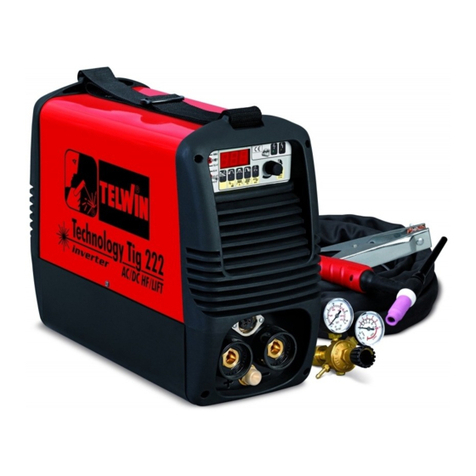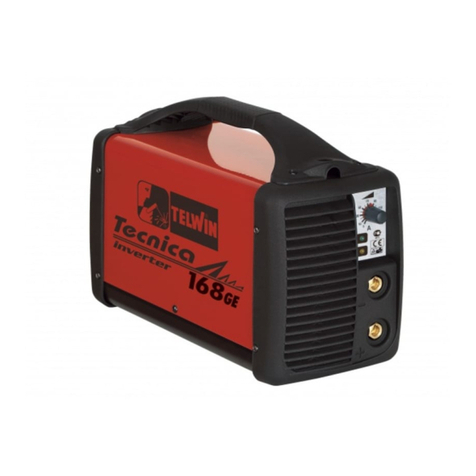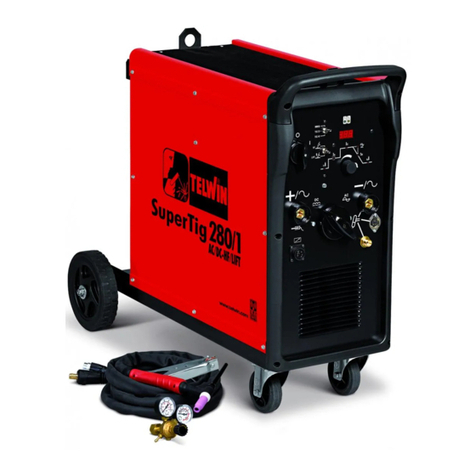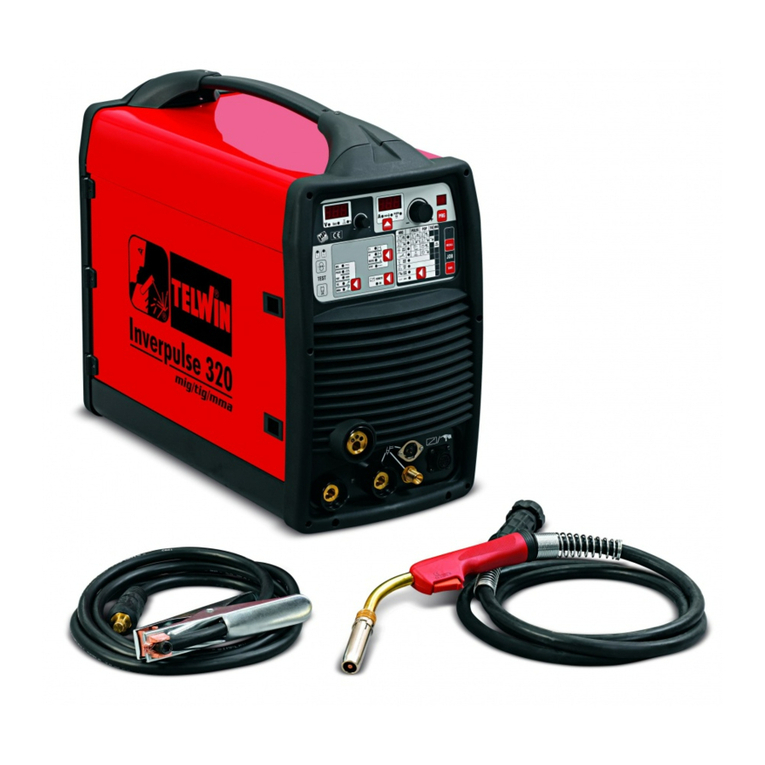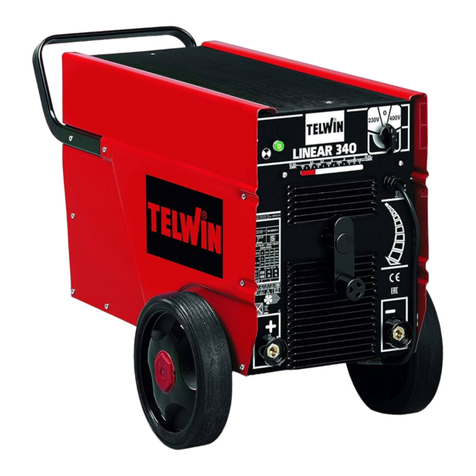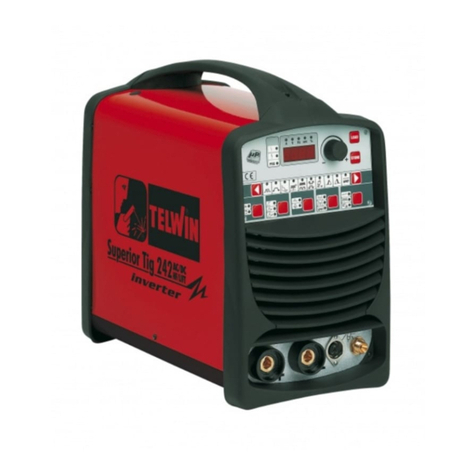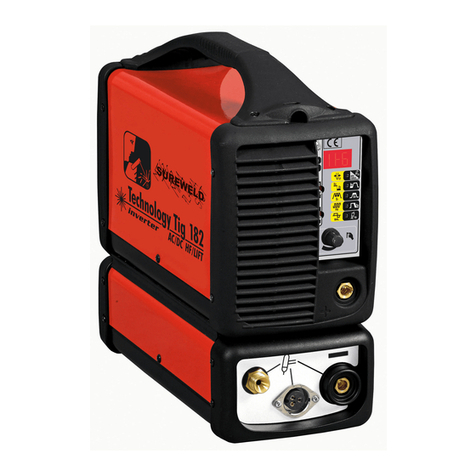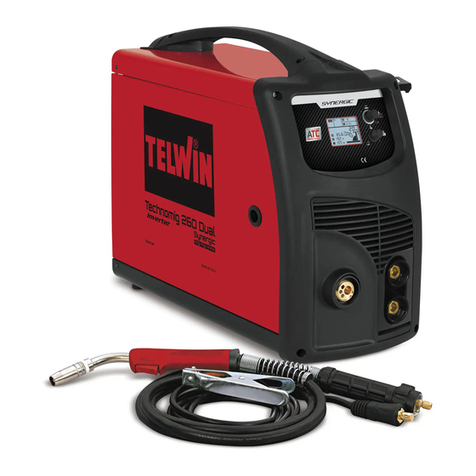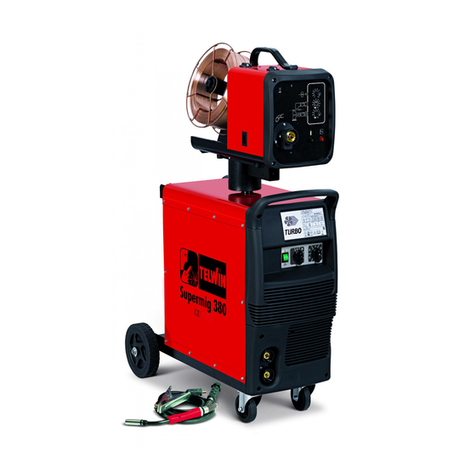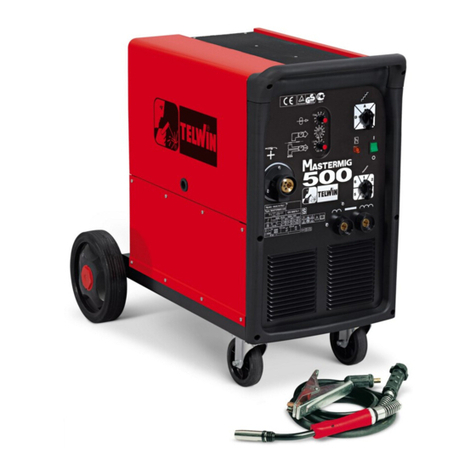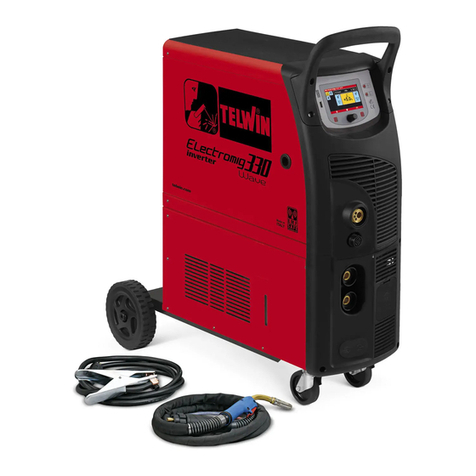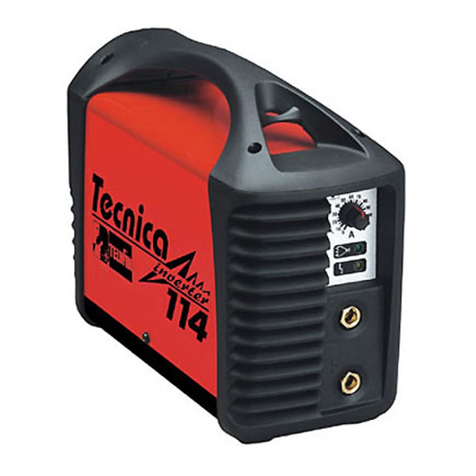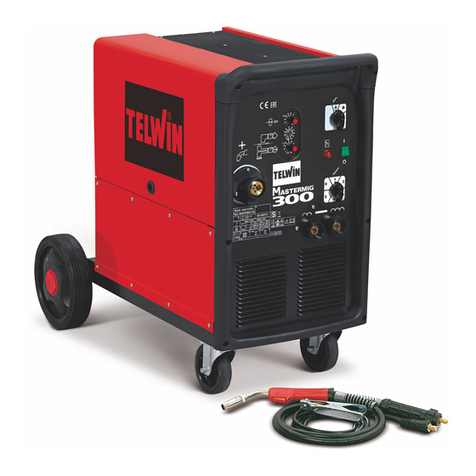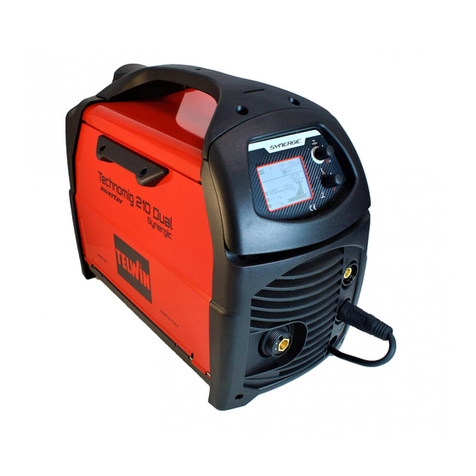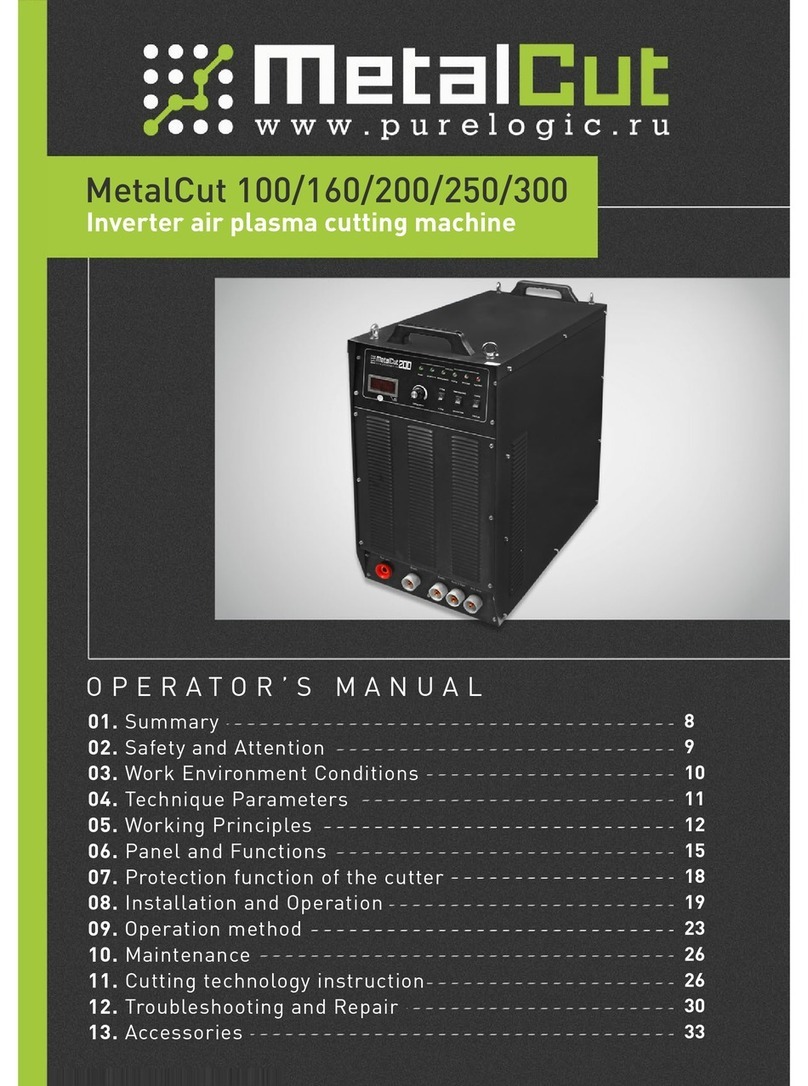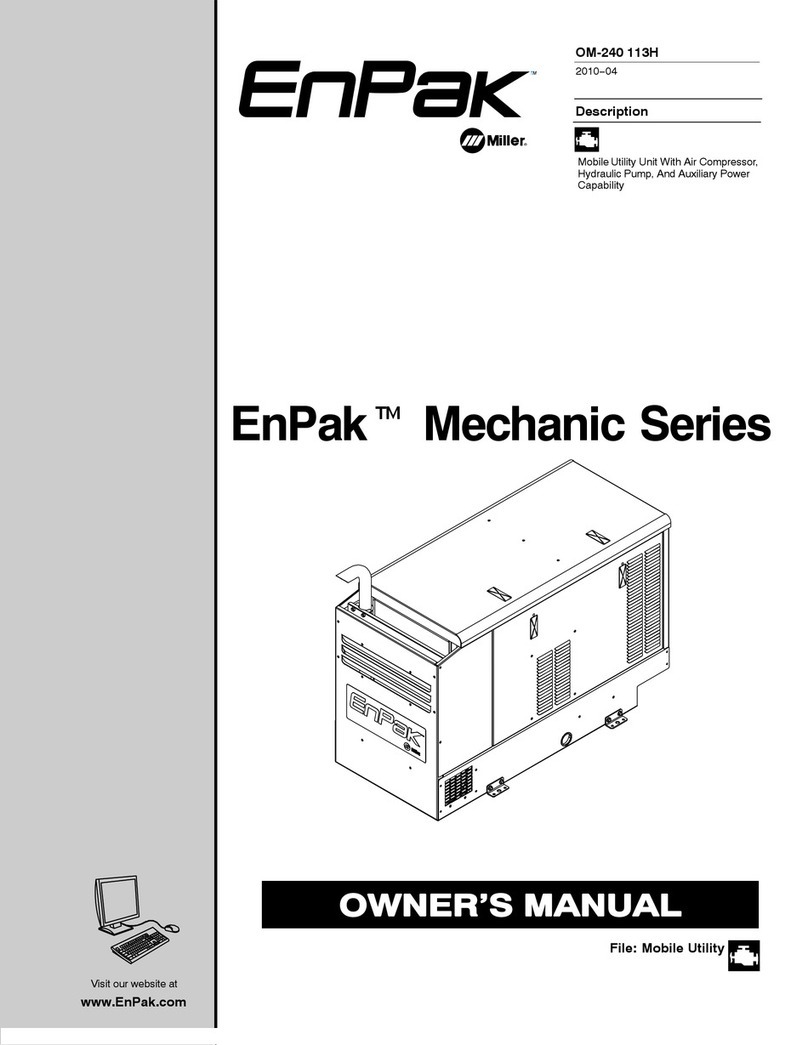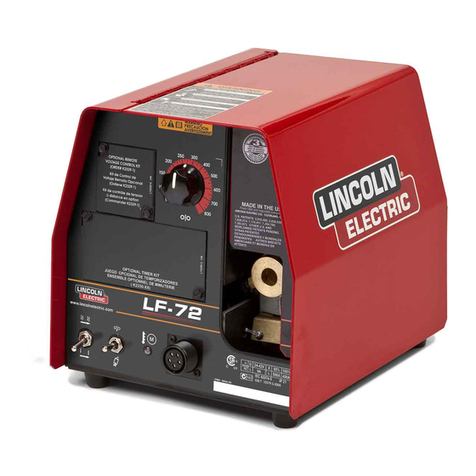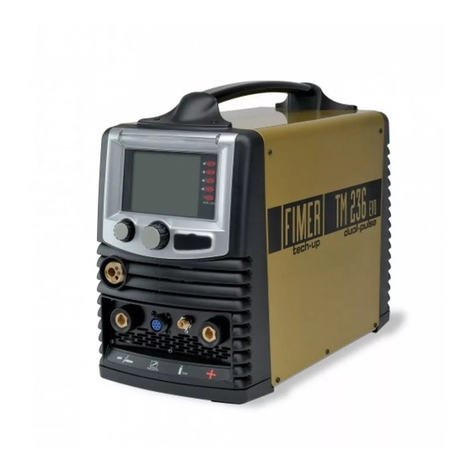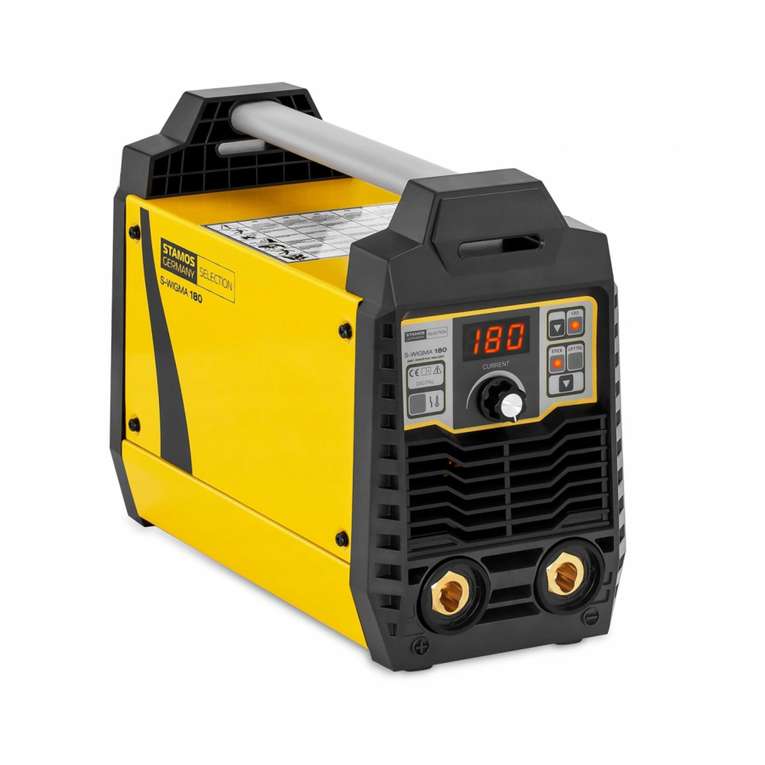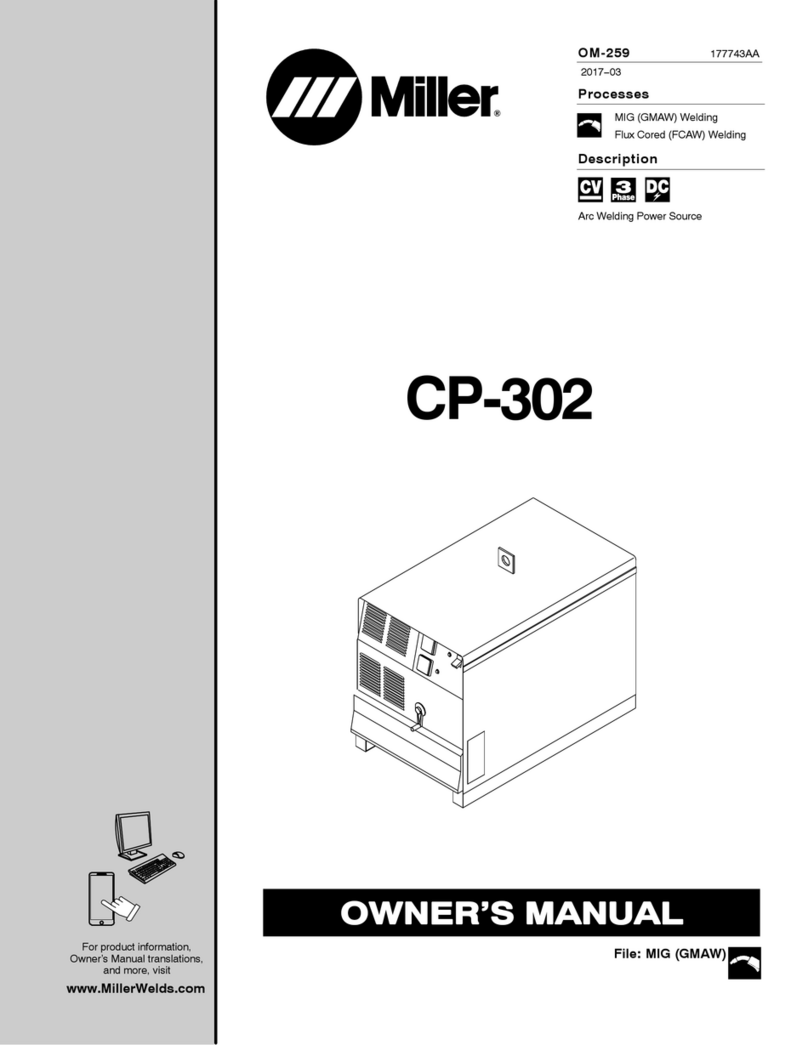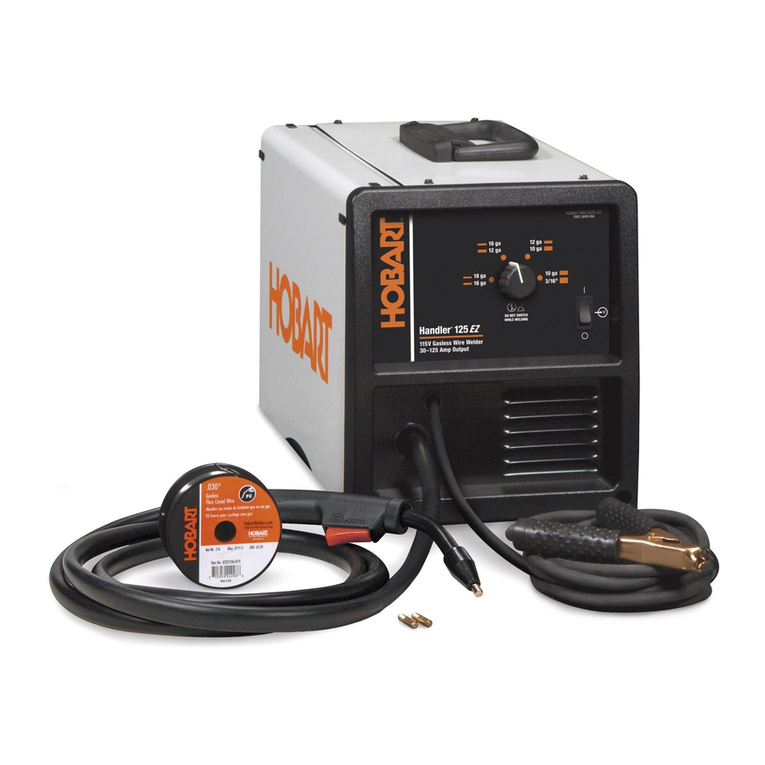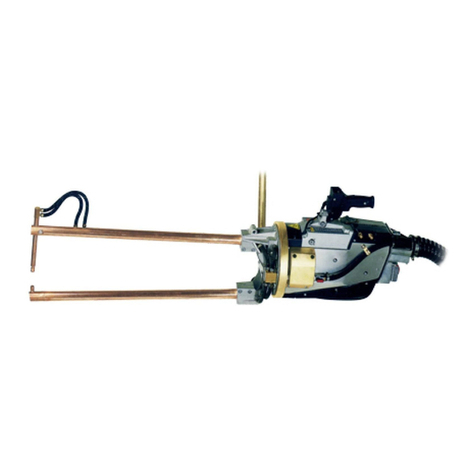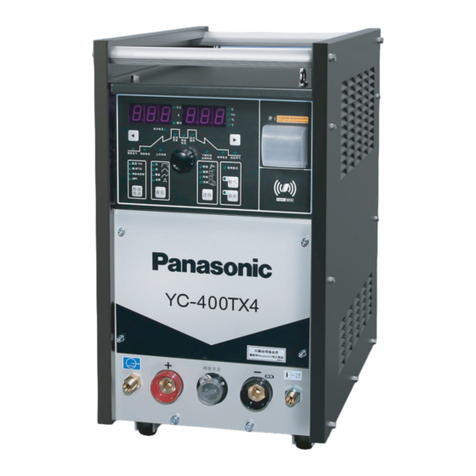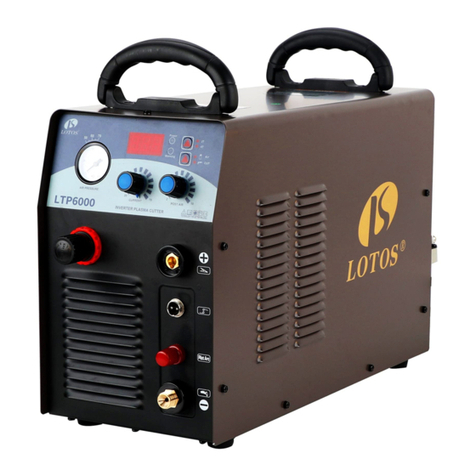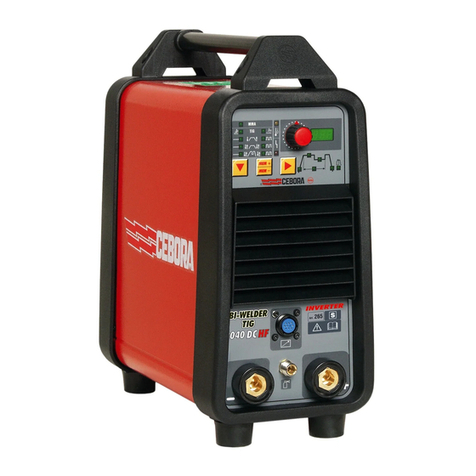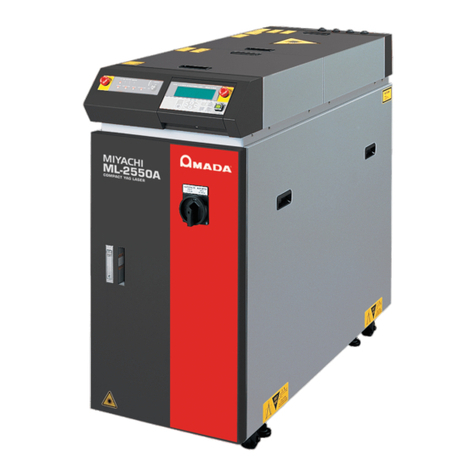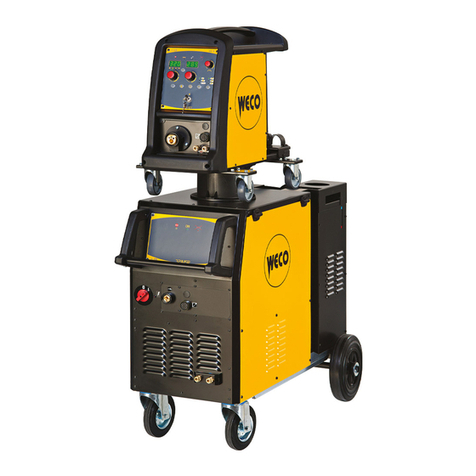
- 6 -
line (primary) means there is a drastic reduction in the volume of both the
transformer and the levelling reactance. This allows the construction of a
welding machine with extremely reduced weight and volume, enhancing
its advantages of easy handling and transportation.
ACCESSORIES SUPPLIED ON REQUEST:
- MMA welding kit.
- TIG welding kit.
3. TECHNICAL DATA
DATA PLATE
The most important data regarding use and performance of the welding
machine are summarised on the rating plate and have the following
meaning:
Fig. A
1- Protection rating of the covering.
2- Symbol for power supply line:
1~: single phase alternating voltage;
3- Symbol S: indicates that welding operations may be carried out in
environments with heightened risk of electric shock (e.g. very close
to large metallic volumes).
4- Symbol for welding procedure provided.
5- Symbol for internal structure of the welding machine.
6- EUROPEAN standard of reference, for safety and construction of arc
welding machines.
7- Manufacturer’s serial number for welding machine identication
(indispensable for technical assistance, requesting spare parts,
discovering product origin).
8- Performance of the welding circuit:
- U0:maximum no-load voltage.
- I2/U2:current and corresponding normalised voltage that the
welding machine can supply during welding
- X :Duty cycle: indicates the time for which the welding machine
can supply the corresponding current (same column). It is
expressed as %, based on a 10 minutes cycle (e.g. 60% = 6 minutes
working, 4 minutes pause, and so on).
If the usage factors (on the plate, referring to a 40°C environment)
are exceeded, the thermal safeguard will trigger (the welding
machine will remain in stand-by until its temperature returns
within the allowed limits).
- A/V-A/V:shows the range of adjustment for the welding current
(minimum-maximum) at the corresponding arc voltage.
9- Technical specications for power supply line:
- U1:Alternating voltage and power supply frequency of welding
machine (allowed limit ±10%):
- I1 max:Maximum current absorbed by the line.
- I1e:eective current supplied.
10- :Size of delayed action fuses to be used to protect the power
line.
11- Symbols referring to safety regulations, whose meaning is given in
chapter 1“General safety considerations for arc welding”.
Note: The data plate shown above is an example to give the meaning
of the symbols and numbers; the exact values of technical data for the
welding machine in your possession must be checked directly on the data
plate of the welding machine itself.
OTHER TECHNICAL DATA
- WELDING MACHINE:
- see table 1 (TAB.1)
- %USE AT 20°C (if present on the top cover of the welding machine)
USE AT 20°C, it gives, for each diameter (Ø ELECTRODE), the number
of weldable electrodes within an interval of 10 minutes (ELECTRODES
10 MIN) at 20°C with a pause of 20 seconds for each electrode change;
this datum is given also in percentage (%USE) which is the value in
comparison with the maximum number of weldable electrodes.
- ELECTRODE HOLDER CLAMP:see table 2 (TAB.2)
The weight of the welding machine is given in the table 1 (TAB.1)
4. DESCRIPTION OF THEWELDING MACHINE
The unit is comprised of power modules which have been developed on
a specially printed circuit designed to maximise reliability and reduce
maintainance.
Fig. B
1- Power supply input (1~), rectier group and balancing capacitors.
2- Transistors and drivers switching bridge (IGBT).
It turns the mains rectied voltage into high frequency alternate
voltage and permits power regulation according to the current/
voltage of the weld to be done.
3- High frequency transformer: the primary windings are fed by the
voltage converted by Block 2, it has the function of adapting voltage
and current to the values required by the arc welding procedure and,
simultaneously, isolates the welding circuit from the mains.
4- Secondary rectier bridge with inductance: this changes the
alternate voltage/current supplied by the secondary windings into
continuous current/voltage at a low wave-length.
5- Electronic and regulation board: this instantly checks the value of the
welding current against that selected by the user, it modulates the
commands of the IGBT drivers, which control Regulation. Determines
the dynamic response of the current while the electrode melts
(instantaneous short circuits), and supervises the safety systems.
CONTROL, ADJUSTMENT AND CONNECTION DEVICES
WELDING MACHINE
at the front:
Fig. C
1- Encoder (1) selection and adjustment of the welding parameters; it
enables adjustment even during welding.
Operating modes and parameters:
- First function on short press of encoder (1):
In MMA selection and setting of ARC “Arc Force” HOT “Hot
Start”and I2“output current”.
- Second function on prolonged press of encoder (1):
After prolonged pressing, selection takes place via encoder (1)
among MMA, MMA VRD and TIG LIFT cyclically with ashing
indication on the display (2) of the mode.
To exit this adjustment procedure, encoder pressing is necessary.
Hot Start (on display““):
Adjustment parameter of the initial overcurrent (adjustment
0-100%); the display shows the percentage increase as to the value
of the pre-selected welding current. This adjustment facilitates the
electric arc strike.
Arc Force (on display“”):
Adjustment parameter of the dynamic overcurrent (adjustment
0-100%); the display shows the percentage increase as to the value
of the pre-selected welding current. This setting improves welding
uidity and prevents the electrode from sticking to the metal piece.
VRD (on display“”):
Reduction device of the loadless output voltage (on-o selection)
with indication on the display (2). The VRD device is enabled if the
“VRD” icon appears on the display, the device is not active without
the icon.
This device increases operator safety when the welding machine is
on but not in the welding mode.
RESET PARAMETERS:
For this specic function, you can access it keeping the encoder (1)
pressed during start-up of the welding machine (with main switch
closure).
Switching on and keeping the encoder selection (1) pressed, the
Reset mode activates and RES OFF is displayed, rotating the encoder
(1) you alternatively select ON / OFF.
You can exit this selection/setting by prolonged pressing the
encoder selection (1), conrming selection of Reset and therefore
with start-up of the board.
Instead, with a single, short press of the encoder selection (1), you
enter the setting menu of the current ranges where you can set the
current reduction class (CL1 high current, CL2 low current), rotating
the encoder (1) you alternatively select CL1/CL2.
To conrm and start the board, prolonged press the encoder
selection (1).
2- Display:
:
It indicates output voltage on quick couplings (3) and (4).
Alarm icon “ ”: normally o, when on it indicates the welding
machine is blocked (the machine remains on without supplying
power) due to intervention of one of the following guards:
- Protection against line overvoltage:the voltage is outside the
range +/- 15% compared to the plate value. Alarm on display
“AL.3”.
- Protection against line undervoltage:the voltage is outside
the range +/- 15% compared to the plate value. Alarm on display
“AL.4”.
ATTENTION:Exceeding the upper limit, stated above, will
seriously damage the device.
- ANTI STICK protection:the electrode is stuck to the material to




